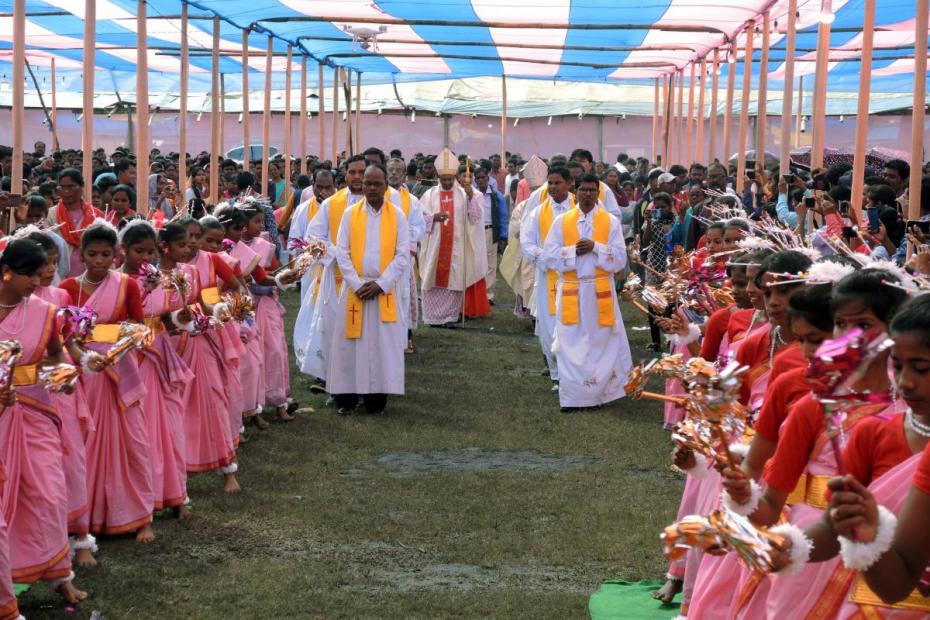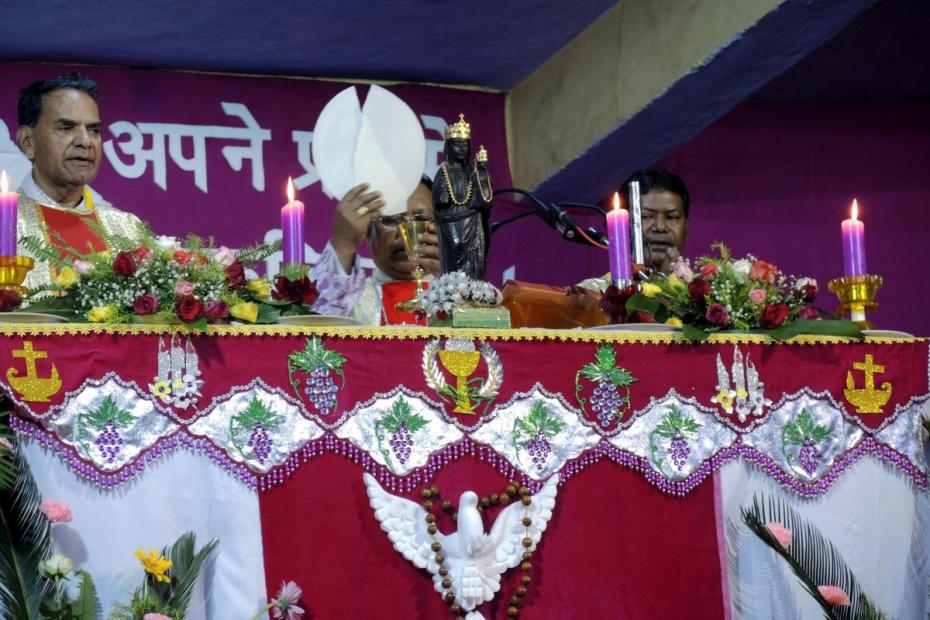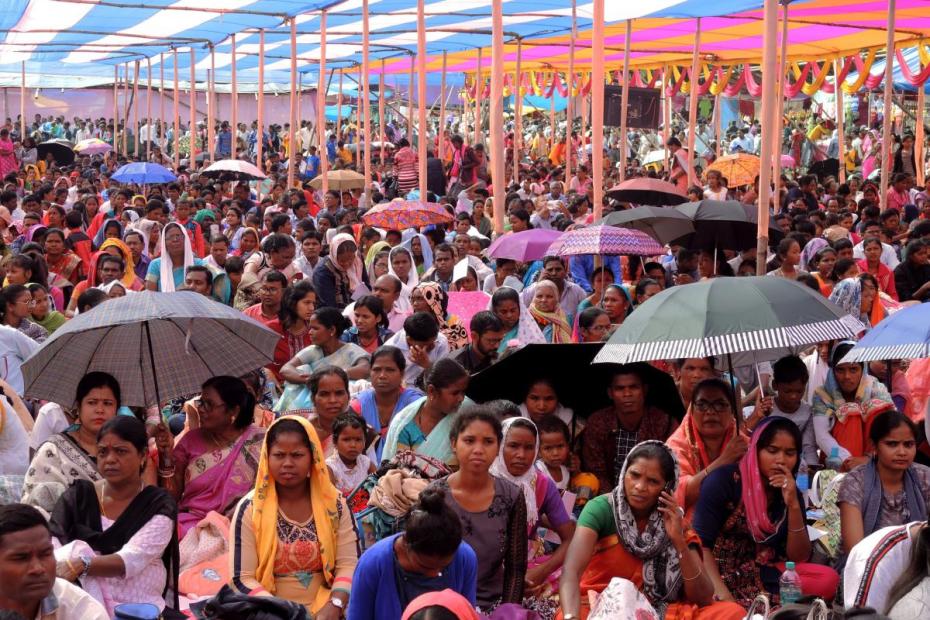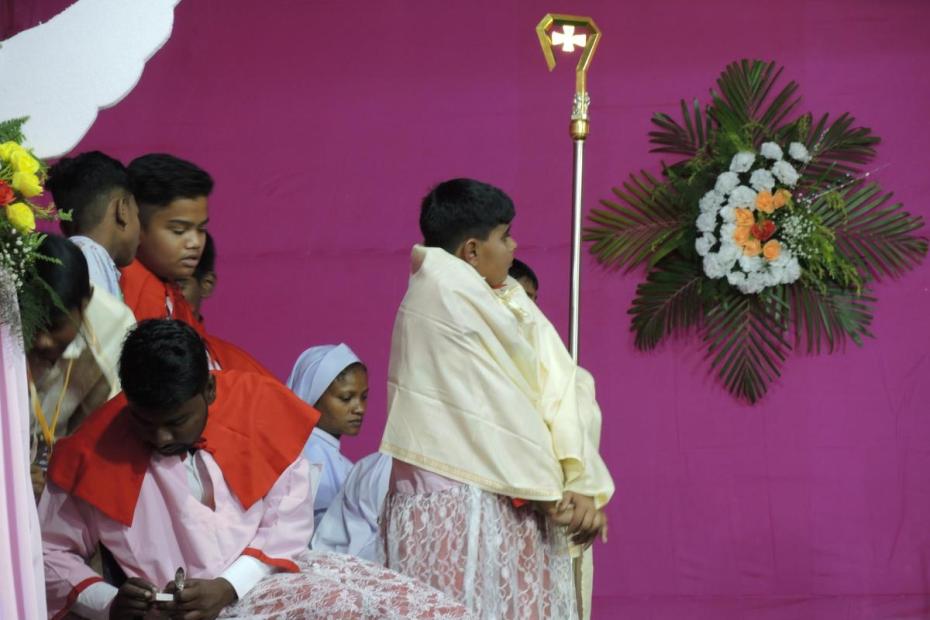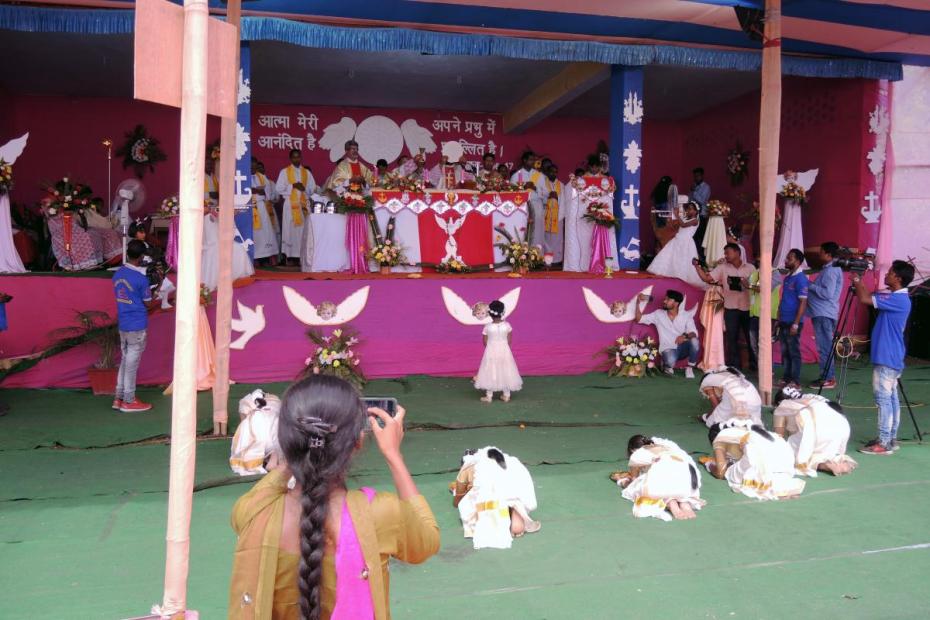The celebration surrounding Dhori Mata draws upon what is called “inculturation.” After the Second Vatican Council, India was a primary area for liturgical experimentation. Going by the name, “inculturation,” the movement for liturgical adaptation, was most specifically associated with the work of the National Liturgical Center in Bangalore under the direction of D.S. Amalorpavadass. What emerged during this period of experimentation were “12 Points of Adaptation” to Indian culture, which were approved by the Vatican in 1969. 1 More radical forms of adaptation—such as using non-Christian scriptures in worship—were rejected along with a proposed Indian anaphora or prayer during the consecration. Nonetheless, “12 Points of Adaptation” still remain and, in the Mass honoring Dhori Mata, there are two particularly important “inculturated” features: dance and aarati.
Dance
Jharkhand lies in what is called the “tribal belt” of indigenous or Adivasi tribes. In Jharkhand as a whole, the Santals are the most numerous tribe, though in the Hazaribag diocese the Munda, Oroan and Birhor tribes are most numerous. Each tribe has a complex culture of dance and song that is correlated with the seasons. In the Mass honoring Dhori Mata, processional or welcome dances are specifically adapted to Catholic liturgy.
For the liturgy of the Word, the Bible is brought forth to the refrain: “We will take the Word and go and proclaim the greatness of God.” For the offertory, the gifts are also accompanied dance along with a devotional song that asks that the offerings, especially the bread and wine, be accepted and blessed by God.
Aarati
Aarati is another aspect of the Mass that is specifically adapted to Indian culture. Within Indian culture aarati has many complex and subtle forms but the basic component of aarati is an oil lamp or camphor flame that is rotated clockwise to honor the deity or a particularly important person.
In the entrance processional, the co-celebrating priests are welcomed by the application of kumkum or vermillion on the forehead in what is called a “tilak” or “tika.” As an added honor, Bishop Anand Jojo of Hazaribag is garlanded along with his brother bishop, and aarati completes this initial sequence of welcome.
In the Mass honoring Dhori Mata, the most elaborate form of aarati is performed immediately after the consecration with the refrain: “We perform aarati. We perform an aarati of flowers. We perform an aarati of incense. We perform an aarati of light.”
Usually, there are eight flowers on each tray that represent the submission or offering of the four cardinal directions—and the intermediate spaces between them—to God. Incense is taken to represent prayers rising to heaven, while the light or flame is often glossed as representing Jesus “the light of the World.”
After aarati is performed, there is the panchanga pranam, “the bow of five limbs,” that indicates the deepest form of respect and devotion.
- 1See Mathew N. Schmalz, “Ad Experimentum: Theology, Anthropology and the Paradoxes of Indian Catholic Inculturation,” Theology and the Social Sciences, ed. Michael Barnes (Maryknoll NY: Orbis Books, 2001), 161-180.
